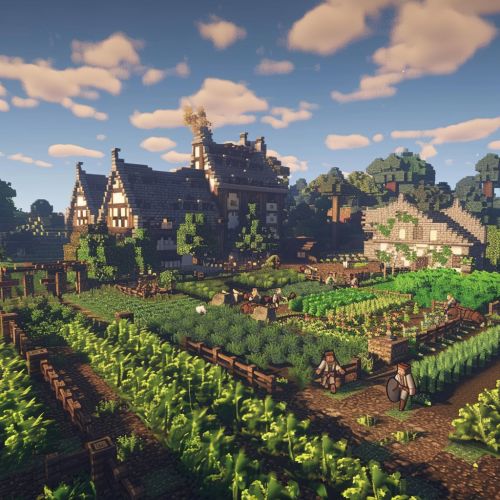Manorialism
Introduction
Manorialism was the organizing principle of rural economy and society in medieval Europe, originating in the late Roman Empire and flourishing during the Middle Ages. It was characterized by the vesting of legal and economic power in a lord of the manor, who was supported economically from his own direct landholding and from the obligatory contributions of a legally subject part of the peasant population under the jurisdiction of the lord. This system is also known as the seigneurial system, particularly in France.
Historical Context
Manorialism emerged as a response to the collapse of the Roman Empire, which left a vacuum of centralized power and necessitated local self-sufficiency. The feudal system provided the political framework, while manorialism provided the economic foundation. The system was deeply intertwined with the agricultural practices of the time, focusing on the manor as the basic unit of production.
Structure of the Manor
The manor was typically composed of three main areas: the demesne, the dependent holdings, and the free peasant land. The demesne was the land retained by the lord for his own use and profit, worked by serfs or villeins who owed labor services. Dependent holdings were lands held by serfs who were bound to the manor and required to provide labor, produce, or payments to the lord. Free peasant land was held by free peasants who paid rent but were not bound by labor services.


Social Hierarchy and Obligations
The social structure of manorialism was hierarchical. At the top was the lord of the manor, who wielded judicial and economic authority. Below him were the vassals, who might hold land from the lord in exchange for military service. The majority of the population were serfs or villeins, who were legally tied to the manor and owed various forms of labor and dues.
Lords and Vassals
Lords were responsible for the protection and administration of their manors. They held court to resolve disputes and enforce manorial laws. Vassals, often knights or minor nobles, provided military service and could hold their own smaller manors.
Serfs and Villeins
Serfs were the backbone of the manorial economy. They worked the lord's demesne and their own plots, providing labor, a portion of their produce, and various dues. Villeins were similar to serfs but had slightly more rights and could sometimes own property.
Economic Aspects
The manorial economy was largely self-sufficient, with the manor producing most of what its inhabitants needed. This included agricultural products, livestock, and various crafts. Surpluses were rare and typically traded locally.
Agricultural Practices
Agriculture was the primary economic activity. The open-field system was common, where large fields were divided into strips and farmed communally. Crop rotation and fallowing were practiced to maintain soil fertility.
Crafts and Trades
In addition to farming, manors often had skilled craftsmen such as blacksmiths, carpenters, and weavers. These craftsmen provided necessary goods and services to the manor's inhabitants.
Legal and Judicial Functions
Manorial courts were a central feature of manorialism, dealing with both civil and criminal matters. The lord or his steward presided over these courts, which handled disputes, enforced manorial customs, and imposed fines and other penalties.
Decline of Manorialism
Manorialism began to decline in the late Middle Ages due to several factors, including the growth of urban centers, the rise of a money-based economy, and the Black Death, which drastically reduced the population and labor force. These changes led to the gradual erosion of the manorial system and the rise of more modern economic structures.
Legacy
The legacy of manorialism can still be seen in the landscape and social structures of rural Europe. Many modern villages and towns have their origins in medieval manors, and the hierarchical social structures of the time have influenced contemporary social and economic systems.
